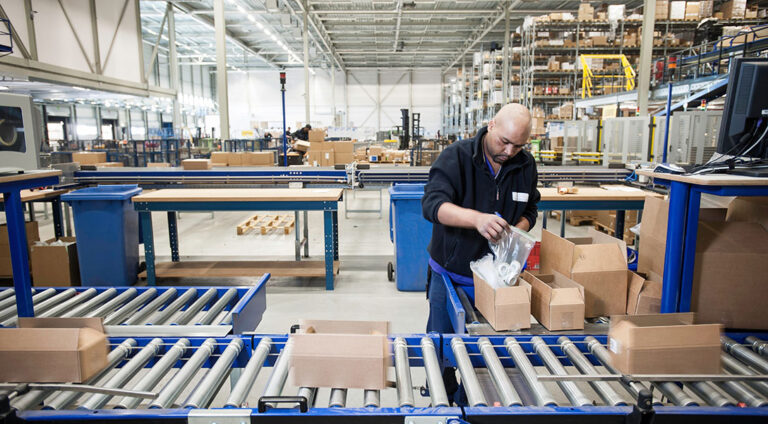Diego Morales-Barnett and Luis Torres
Economic growth in Texas slowed in the fourth quarter, with job growth dropping sharply in October and business activity contracting slightly in November.
Employment growth slowed sharply at the beginning of the quarter, falling from 5.8% in September to 1.2% in October. The Texas Fed's Business Outlook Survey (TBOS) similarly showed a noticeable slowdown in job growth. In November, the TBOS manufacturing production and service sector profit index turned negative.
TBOS respondents also reported falling prices in manufacturing, while those in the services sector noted stable price pressures. Wage pressures remained largely stable.
Texas job growth rate to match U.S. in October
Employment in Texas grew at an annual rate of 1.2% in October, the same pace as the nation (chart 1). However, the state's year-to-date employment growth rate (3.2%) remains higher than the U.S. (1.8%) across all industries.

Despite the slowdown, Texas job growth in the fourth quarter continued to show broad-based gains, led by top sectors such as trade, transportation and utilities. Significant advances have been made in professional and business services, education and medical services. In contrast, U.S. job growth was concentrated in specific industries such as health care and hospitality.
The pessimism of November Texas Service Sector Outlook survey respondents reflects a slowdown in activity in Texas. One utility manager reported that his company's management felt that the company was “heading into a recession.” Similarly, respondents to the Texas Manufacturing Outlook Survey who work in transportation equipment manufacturing said, “There are no positive signs for the future.”
Texas employment indicators for the second quarter, statistically adjusted from earlier data releases, showed a 0.3% decline in payroll costs. Employment growth appears to be lower than previously reported as early data was slightly exaggerated.
The Dallas Fed's 2023 Texas employment forecast (December-December) fell from 3.3% to 3.2%.
Economic activity contracted slightly in November
According to the TBOS survey, revenues in the manufacturing and services sectors fell in November. The Texas Service Sector Outlook Survey (TSSOS) revenue index turned negative for the first time since December 2022 (chart 2). The last time both production and revenue declined in the same month was in May 2020, at the height of the pandemic-induced economic downturn.

Price pressures are mixed, wage pressures are stable
TMOS manufacturing representatives reported a decline in sales prices in November, while service department representatives said prices continued to rise (chart 3). Input cost growth declined further in both manufacturing and services.

Anecdotally, one computer and electronic products manufacturer said the company was “seeing significant increases in prices and lead times,” while a food manufacturing stakeholder stated that “raw material (prices) are going down and margins are decreasing.” This led to an improvement in the rate.” Texas consumer price index headline inflation rate in October was 5.2% annualized. Year-on-year, headline inflation was 4.2% and core inflation (excluding food and energy) was 5.1%. U.S. year-over-year declines were 3.2 percent in the headline and 4.0 percent in the core.
Meanwhile, TBOS manufacturing and services sector officials noted that wage pressures have remained stable (chart 4). According to payroll data, the year-over-year change in wages in Texas in October was 7.3% in manufacturing and 4.4% in services. Overall, wages in Texas outperformed the nation, increasing by 5.2% compared to 4.0% in the United States.

Although wage pressures are stabilizing, recent increases have been significant. A person in charge of food services and restaurants said, “The pressure to raise wages and salaries remains severe.''
Overall, these trends point to a moderation in economic activity heading into 2024. A year ago, the prospect of an economic slowdown toward the end of 2022 looked very promising, but the fundamentals have since proven to be temporary.
The current situation is likely to continue due to rising interest rates, tight financial conditions, and slowing consumption growth. Notably, the average 30-year mortgage rate rose from 5.6% in 2022 to about 7.3% through most of 2023. Regional banks in the 11th District reported tougher financial conditions in November, even as spending, as measured by Texas retail sales tax revenue, fell 0.7%. Compared to the same month last year in November.
About the author
The views expressed are those of the author and are not attributable to the Federal Reserve Bank of Dallas or the Federal Reserve System.



